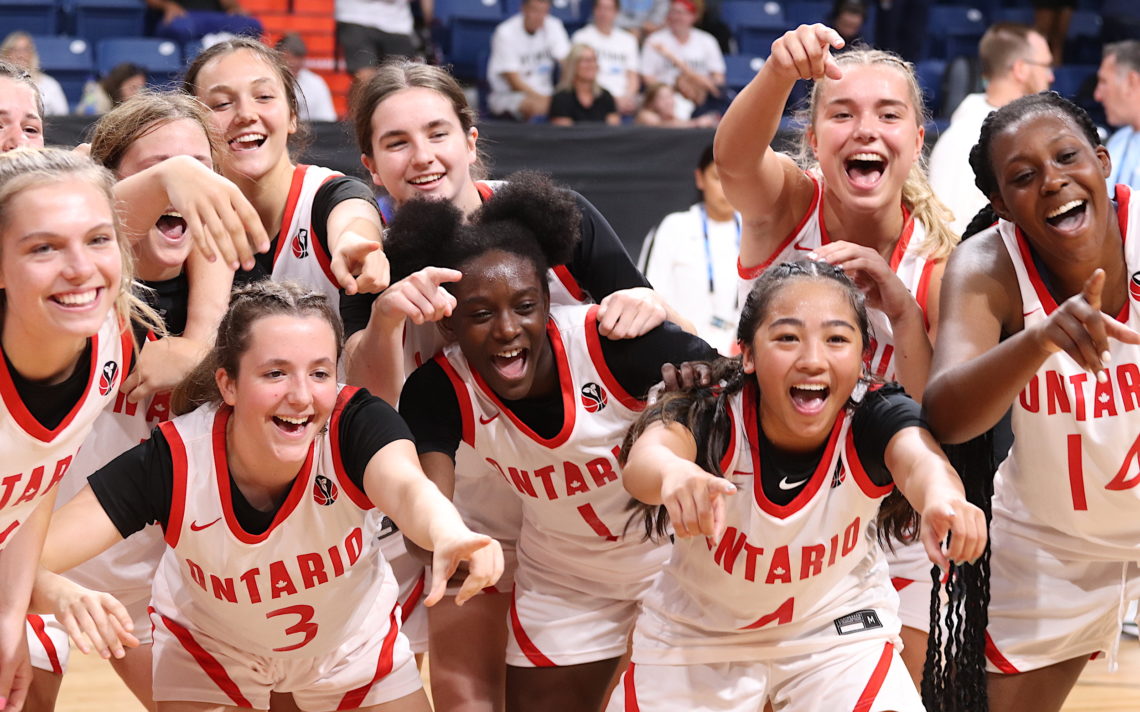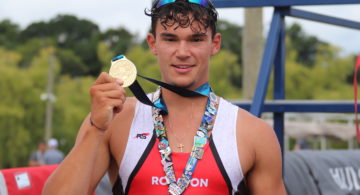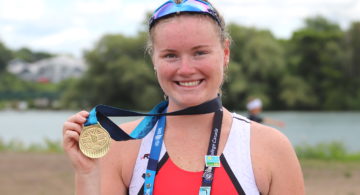
Niagara rocked it out of the park: 300,000 spectators, $350 million economic impact from 2022 Games
We did good.
The above three words aptly sums up Thursday’s ‘celebratory wrap-up presentation’ of the 2022 Canada Summer Games hosted at Canada Games Park by the Niagara Host Society.
“We threw a helluva event and we did it in challenging circumstances, and we did it together,” said Doug Hamilton, the Niagara 2022 Canada Games board chair.
The aforementioned challenging circumstance was the COVID-19 pandemic that delayed the event by one year.
“We as a group, as a community, as Niagara came together to deliver and incredible Games despite that,” he said. “It was a Games that allowed all of us to come out of our homes and come back together and that was part of the cultural celebration. That was so important for all of us.”
At Thursday’s event, Hamilton was presented with an award from Kelly-Ann Paul, Canada Games Council’s president and CEO.
Canada Games Council members were quoted as calling the Games “special and tremendous” and using descriptions such as “nailed it and rocked it out the park’ but Paul, for obvious reasons, wouldn’t give in to Hamilton’s urgings to call the 2022 event the best ever.
Paul was effusive in her praise of the 2022 event.
“The Games were tremendous, phenomenal, a huge, huge success and we do get tongue-in-cheek with the best ever because all the Games are unique and bring amazing contributions to the country,” she said.
Paul underlined the importance of the 2022 Games.
“We really united the nation. That’s what the Canada Games do. They unite the country. It was a promise from the bid and absolutely delivered.”
She saluted Niagara for its ‘barrier breaking.’
“These Games were the most inclusive Canada Games that we have ever seen on record. We are so thankful that Niagara has set the bar where it has and 23, 25 and 27 and future Games will be looking at that.”
She mentioned, French language inclusion, the highlighting of under-represented groups, the reintroduction of lacrosse to the Games and the Indigenous Partner’s Council as key barrier breakers.
“We will be investigating and studying the assets of these Games and the vision of how you did it for years to come and working to integrate it into our transfer of knowledge program,” Paul said. “The Canada Games Council will never regret awarding the Games to Niagara and we are extremely thankful for all of your contributions to our great property.”
Thursday was a chance to thank all the politicians, volunteers and staff that made the Games possible. It was also a chance to highlight some of the bright spots.
Below, in no particular order, are some highlights and numbers from the Games.
The Games had an economic impact of more than $350 million, including $250 million in Niagara. It created 1,940 jobs and resulted in $117 million in wages and salaries.
Attendance at the Games was more than 300,000, including 130,000 at sporting events and 170,000 at cultural events.
“That’s a number that hasn’t been seen before at a Canada Games,” Hamilton said.
The Games exceeded expectations for both ticket revenues and revenues from sponsorships and other contributions. The latter revenues exceeded expectations by more than $2 million.
“We did it because the business community got engaged.”
Those numbers helped the Games finish with a budget surplus.
“We are not yet ready to say what that number is,” he said.
More than 5,000 athletes, the most ever, competed at the Games.
“We got rave revues from the athletes,” Hamilton said.
Ninety-four percent of the athletes rated the Games as excellent or good and more than 70 per cent graded them as excellent. Niagara received the highest-ever ratings for: safe and inclusive environment; athletes village and food; Opening Ceremonies; and, other festival sites.
After the Games, sports equipment was collected and donated to local sports groups.
“Hundreds of thousands of dollars of equipment went back into the community,” Hamilton said.
Niagara College was given $300,000 worth of digital equipment for its efforts in broadcasting the Games.
Hamilton described the broadcasts as good or better than what would have been provided by TSN or CBC at a fraction of the price.
Niagara College’s students and staff presented more 1,000 hours of live coverage watched by more than a million viewers.
Various media outlets from across the country produced more than 7,000 stories on the Games.
“Those 7,000 stories show the kind of reach we had,” Hamilton said.
Canada Games Park had a price tag of more than $100 million because the price was locked in before the pandemic. Building the same facility today would cost $160 million, Hamilton said.
Involved in making the Games a success were 400 planning volunteers, 3,600 Games-time volunteers and 70 staff.
More than 124 public relations and special events were staged prior to the Games.

























